Light and fluffy little Biscoff Cakes, with a secret Biscoff surprise hiding inside, a crown of soft Biscoff frosting on top and a sprinkle of Biscoff biscuit crumb to decorate.
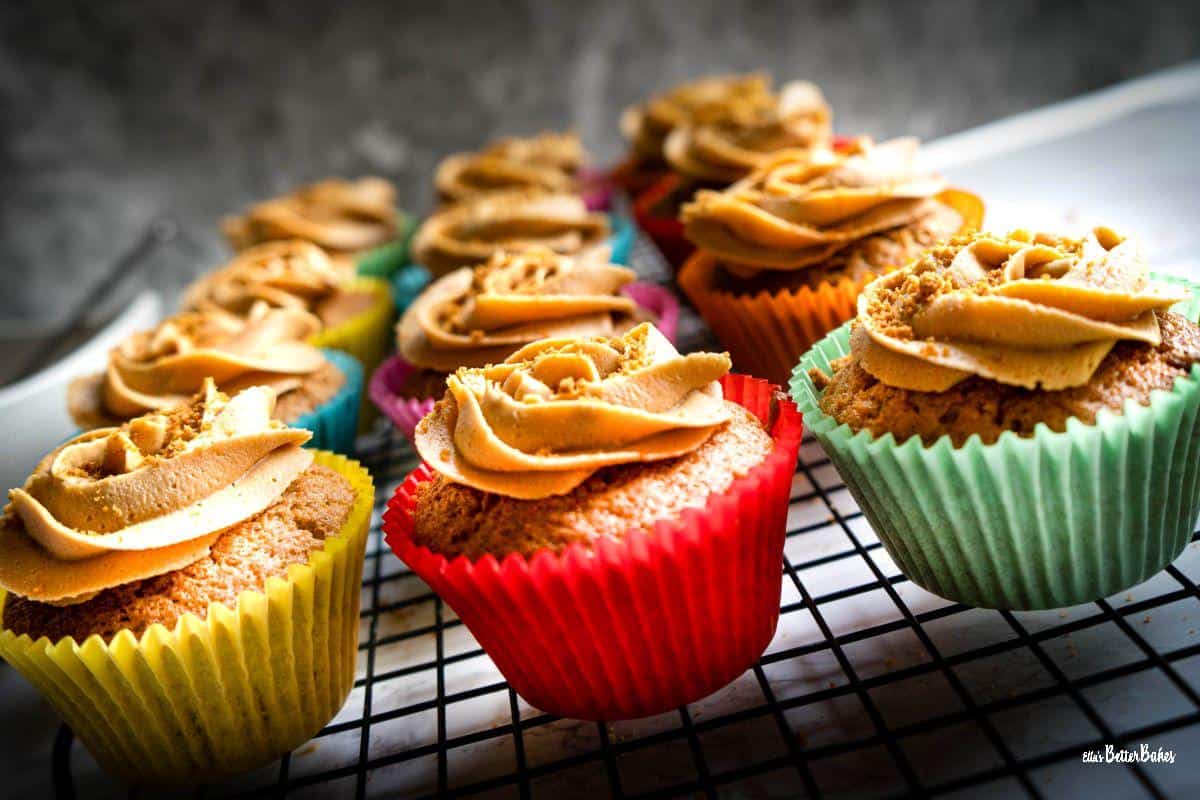
I like my Biscoff Cupcakes to taste Biscoff through and through. However, I discovered that adding Biscoff spread directly to cake batter results in high sugar content and therefore a thick crust on top when baked. Adding less Biscoff just diluted the flavour to negligible.
I also found out, through much experimentation, that adding crushed Biscoff biscuits does result in a deeper Biscoff flavour in the cupcakes, but, on the other hand, also dries the cake batter out when baked, resulting in a crumbly and brittle cake.
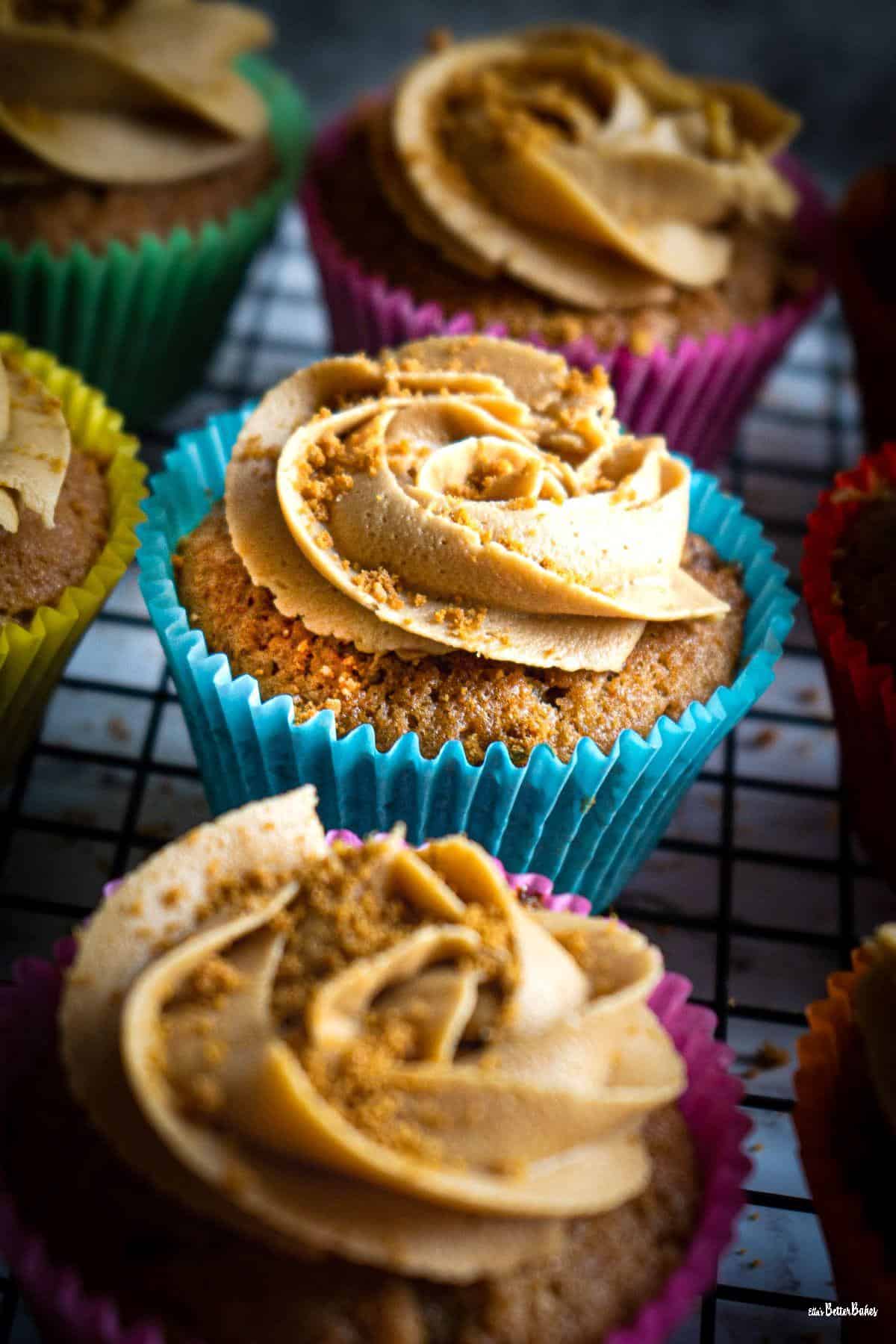
Loads of Biscoffiness within this Biscoff cake recipe...
- We make the cupcakes with light brown muscovado sugar, to give them a hint of caramel.
- Then we cut out a little hole in the middle of each cupcake, soften some Biscoff spread, add it into the cavity and then pop the piece of cut-out cake back on.
- We use more Biscoff spread in our butter icing, there is no mistaking this is Biscoff Buttercream or Biscoff icing or Biscoff frosting, depending on what you choose to call it.
- Finally, we crush Biscoff biscuits to sprinkle over our Biscoff frosting.
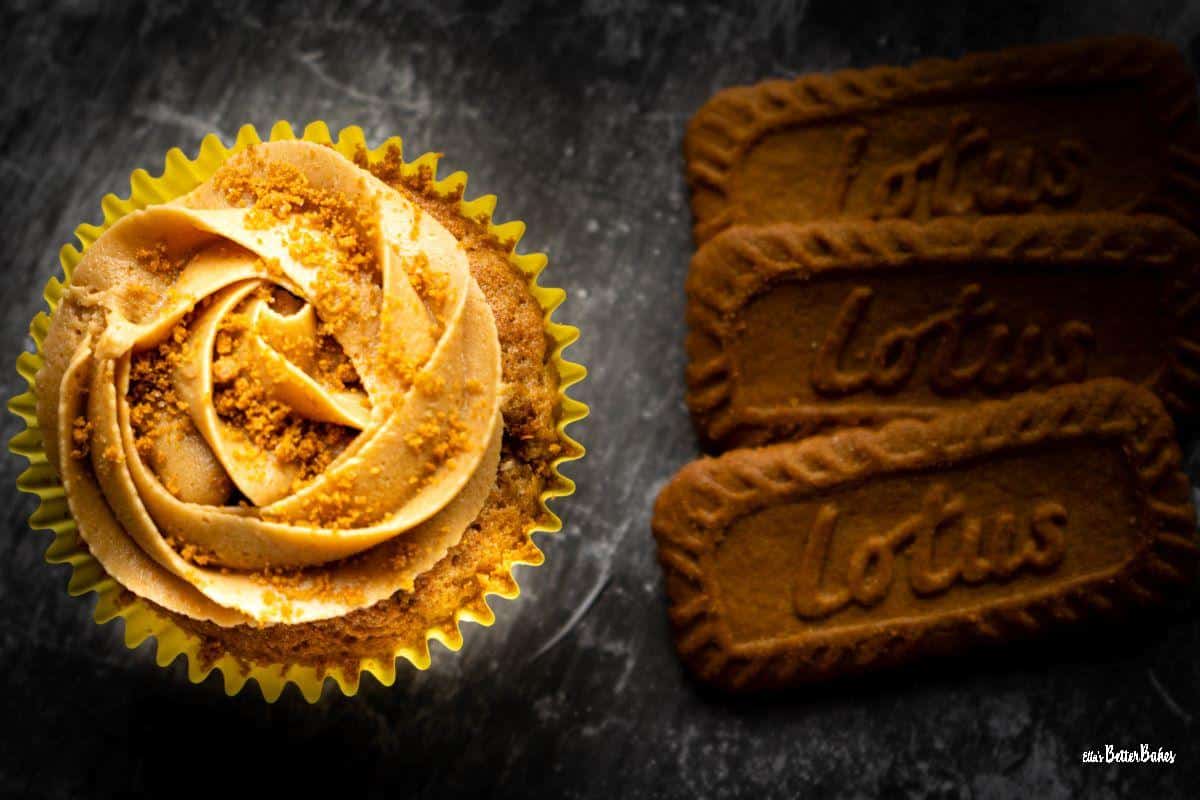
If you make these little Biscoff cakes please do leave a star rating, or a comment, below. I'd love to know how you got on with them.
Happy Biscoff Baking!
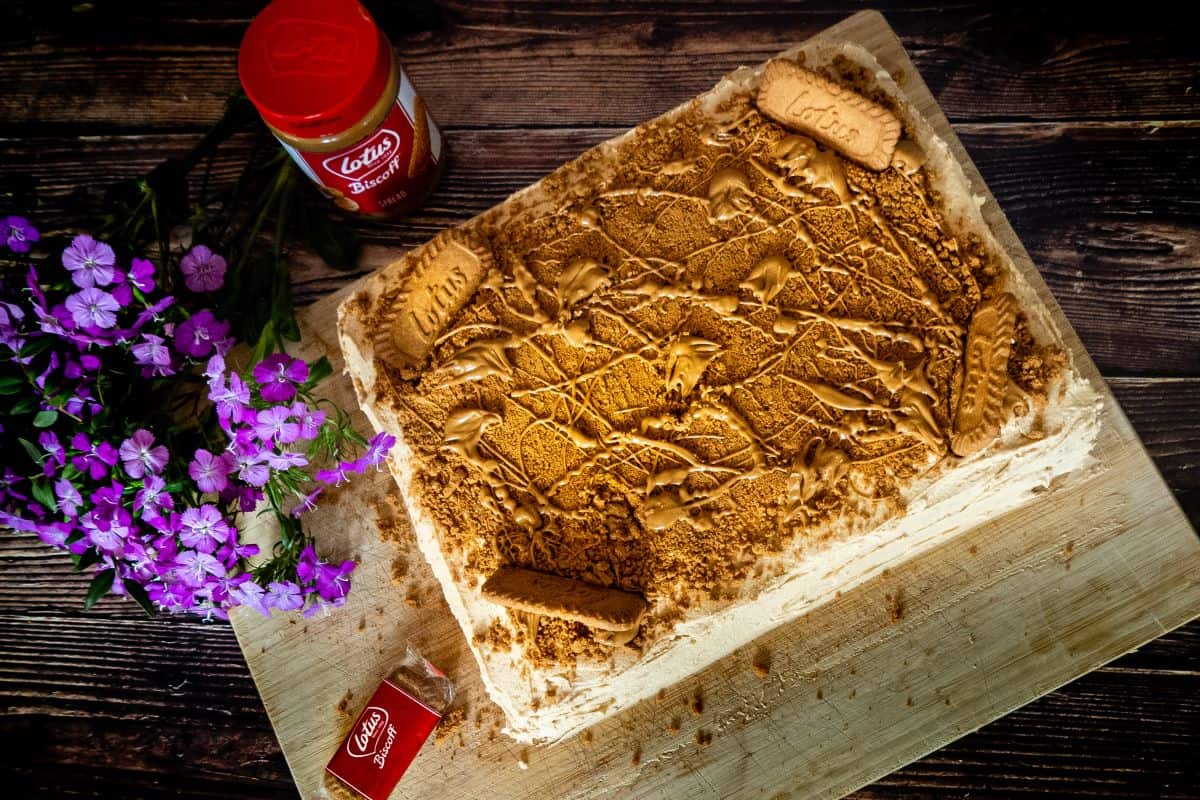
This whole Biscoff Cake (Lotus Biscoff traybake) is a super Biscoff treat!
Jump to:
Ingredients and Substitutions
Lotus Biscoff spread: we add this to the centre of these Biscoff cakes. We also use it to flavour our Biscoff buttercream frosting. Yum Yum Yum.
Lotus Biscoff biscuits: we crush Lotus Biscoff biscuits and then sprinkle them over our Biscoff frosting for decoration, a bit of crunch and more Biscoff flavour.
Light muscovado sugar: we use brown sugar for a caramel hint and because it gives us moist cakes. Feel free to use soft brown sugar, caster (superfine) sugar or golden caster (superfine) sugar instead, they work just as well.
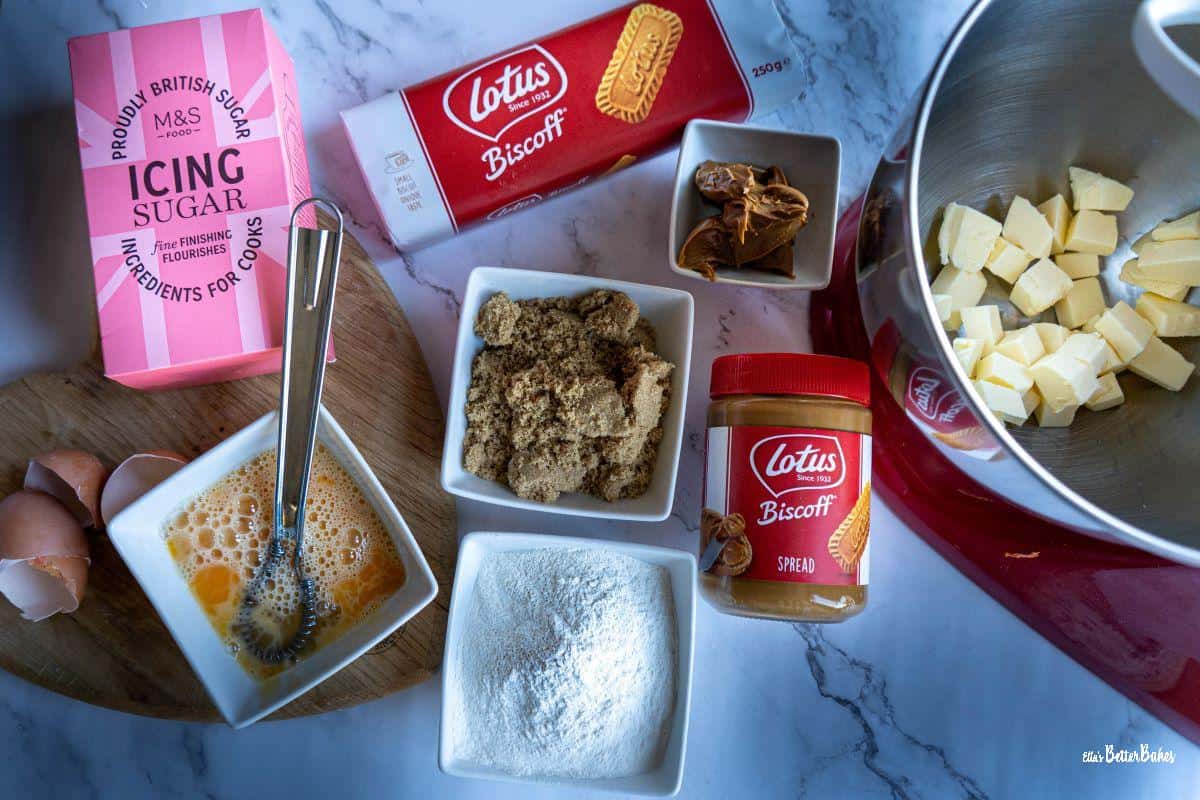
Self-raising flour: is best used when making cakes because it has salt and baking powder already incorporated. It is fine to use plain (all-purpose) flour instead. Details of how much extra baking powder to add are noted below.
Eggs: must be at room temperature so that they bind our Biscoff cake batter together.
Milk: again needs to be at room temperature. Milk makes our cakes lovely and soft.
Baking powder: to ensure our Biscoff Cupcakes rise.
Unsalted butter: for our whirl of Biscoff frosting on each cake. Must be soft to beat up smoothly for smooth buttercream.
Icing sugar: for our Biscoff butter icing. It needs to be sifted first to ensure a smooth buttercream.
Instructions
See end of post RECIPE CARD for precise quantities and instructions.
Biscoff Cupcakes
Beat together your softened butter and brown sugar. Stop beating after a couple of minutes when the mixture is soft and easily spreadable. This ensures plenty of air has been added and helps our cupcakes rise.
Using a fine-mesh sieve, sift together your flour and baking powder.
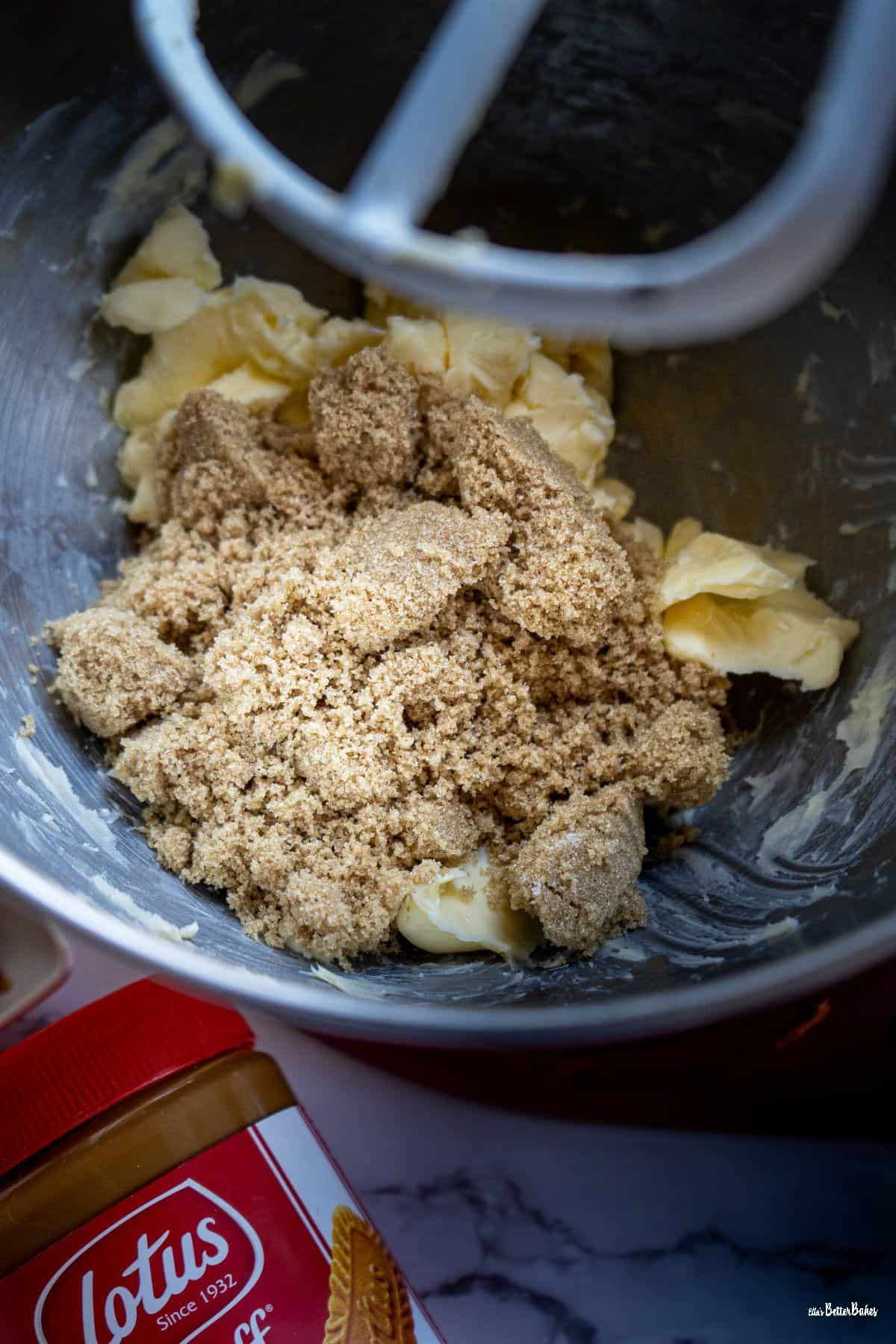
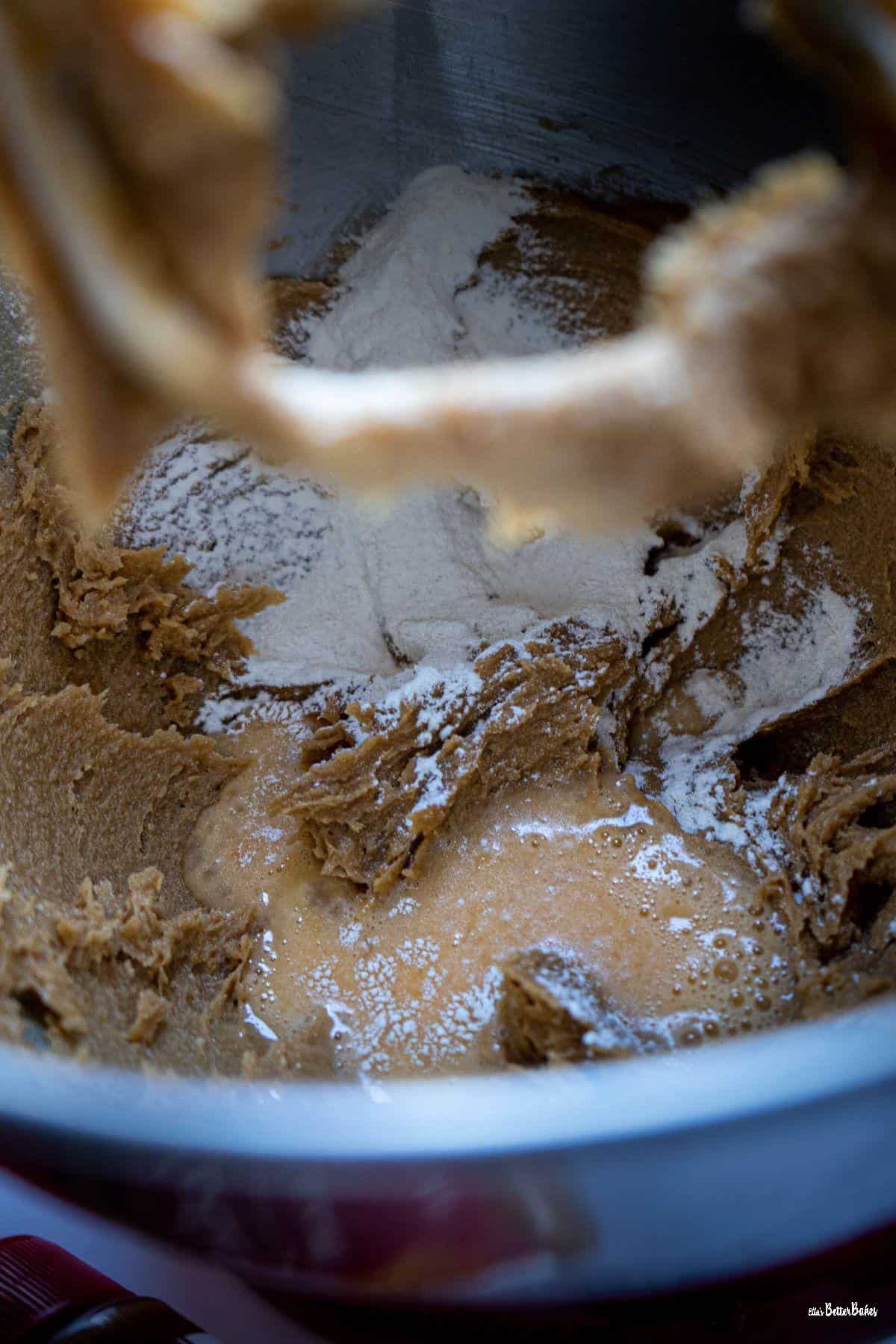
Lightly beat your eggs.
Add a third of your egg mixture and a large dessertspoonful of your flour mixture to your beaten butter and sugar and beat on a low setting until just combined. Repeat until all of your egg has been mixed in.
Beat in the rest of your flour mixture.
Then beat in your milk, this will loosen the batter up.
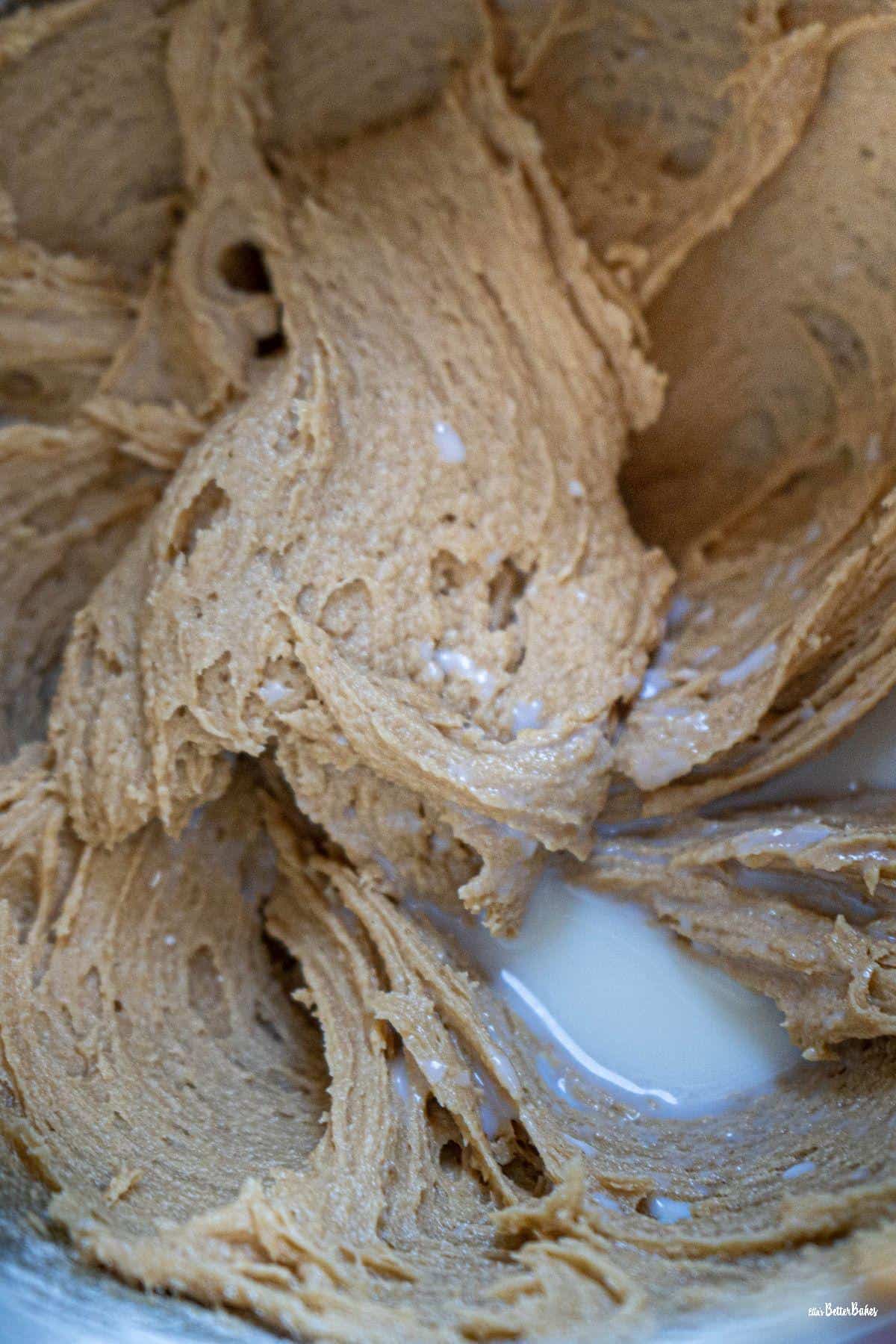
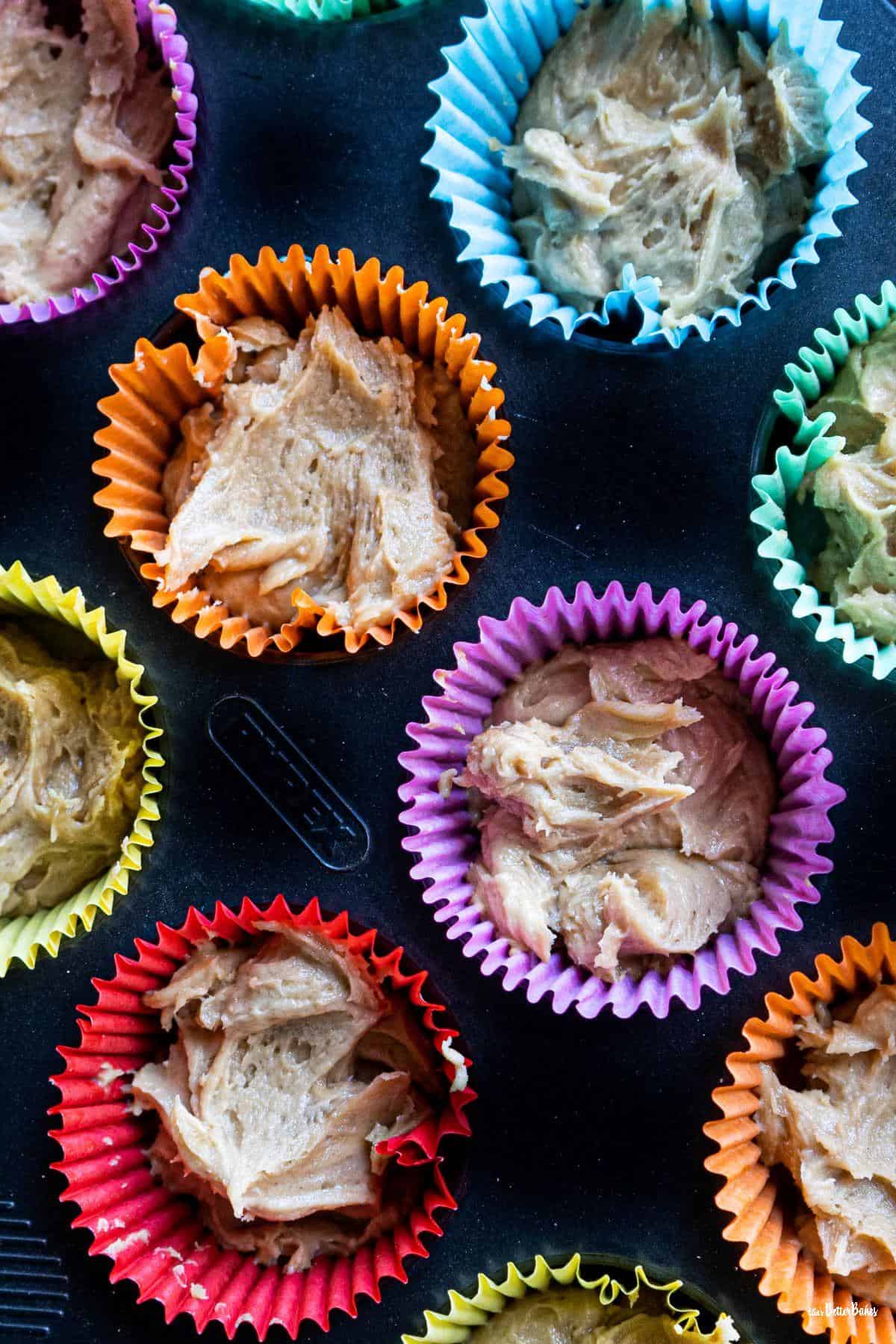
Add equal amounts of your Biscoff cake mixture to your muffin cases and then bake for 18-20 minutes until golden and firm on top.
Remove to your cooling rack and leave to cool completely.
Cut out a hole of about 2 centimetres deep and wide into the top of each Biscoff cake.
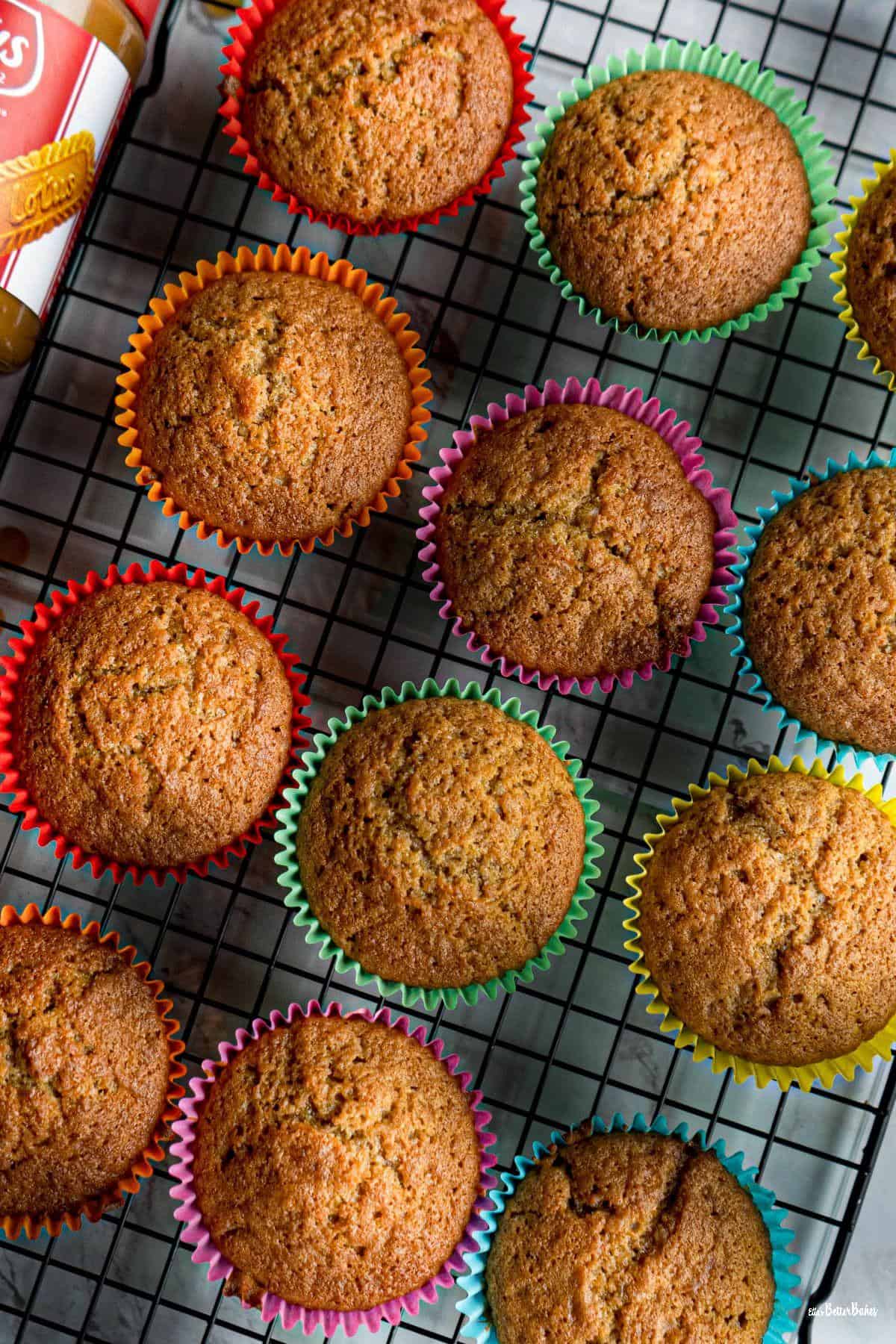
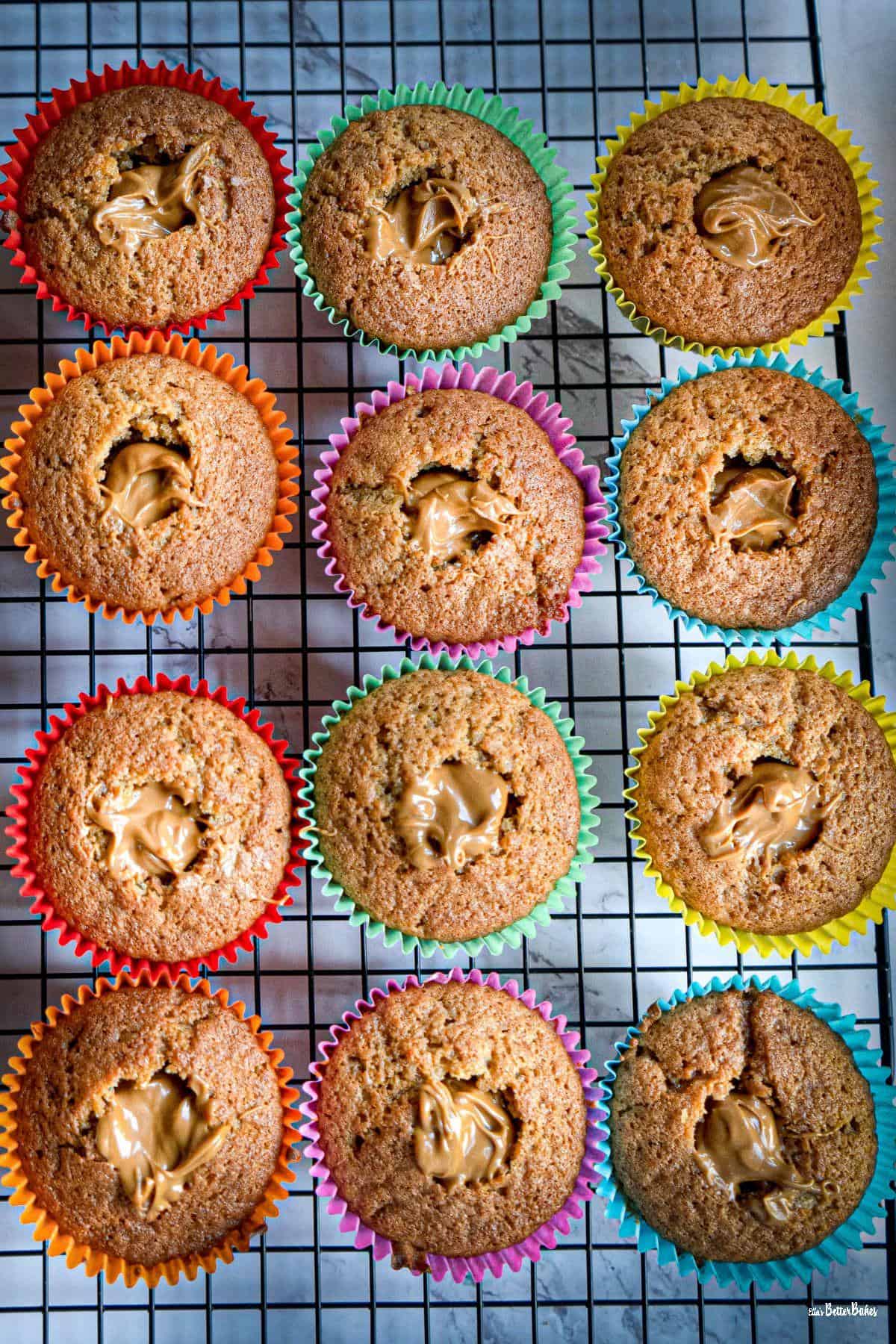
Add Biscoff spread to each cavity and then pop the cutout piece of cake back on to hide it.
If your Biscoff spread is too stiff pop it into a microwavable dish and microwave for 10 seconds to soften a little.
Biscoff Buttercream Frosting
I am not a huge fan of a mountain of buttercream frosting on my cupcakes.
Controversial I know....but I feel too much buttercream can be overpowering and detract from the cake itself.
If you prefer lots of icing though please double the quantities listed in the buttercream ingredients below.
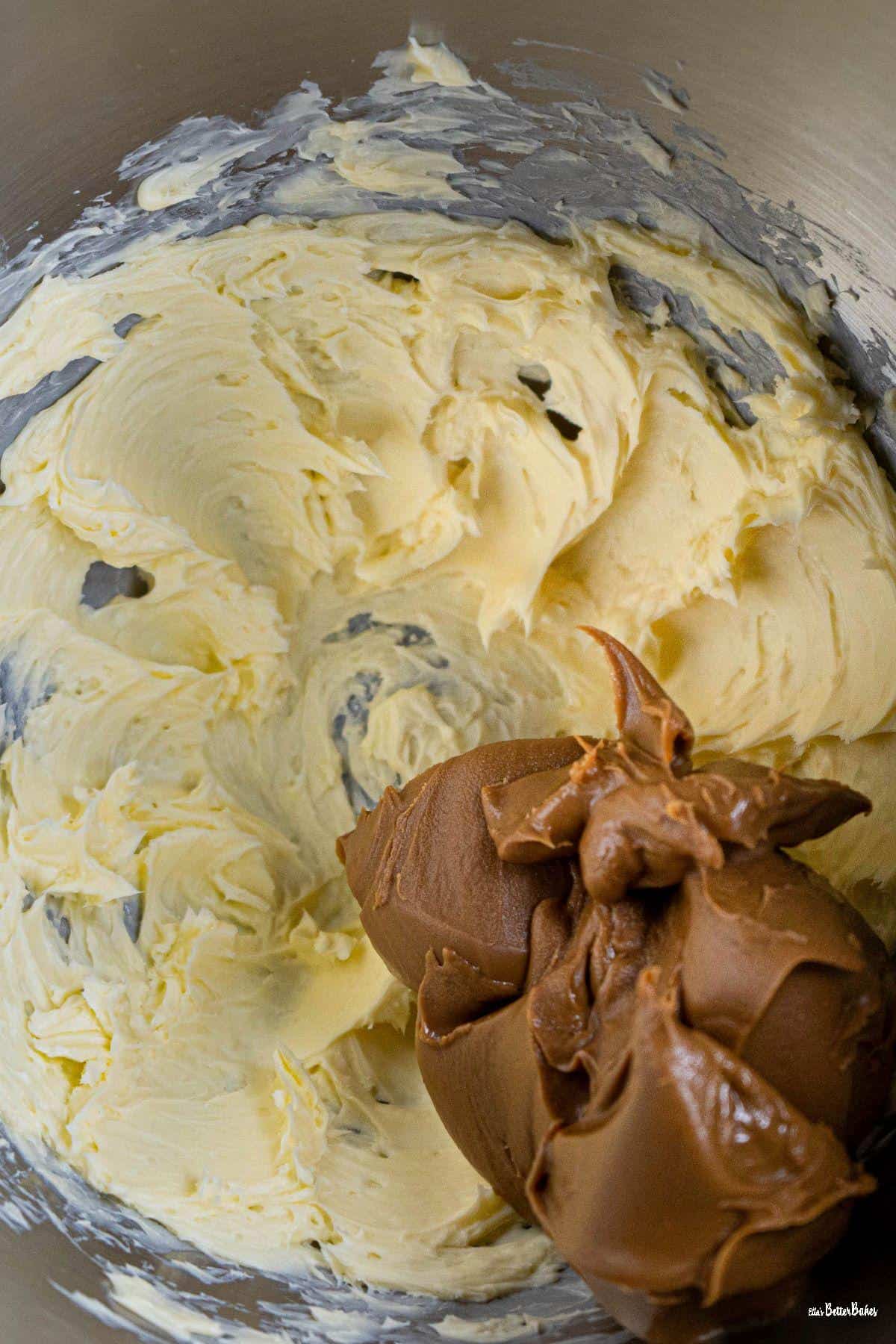
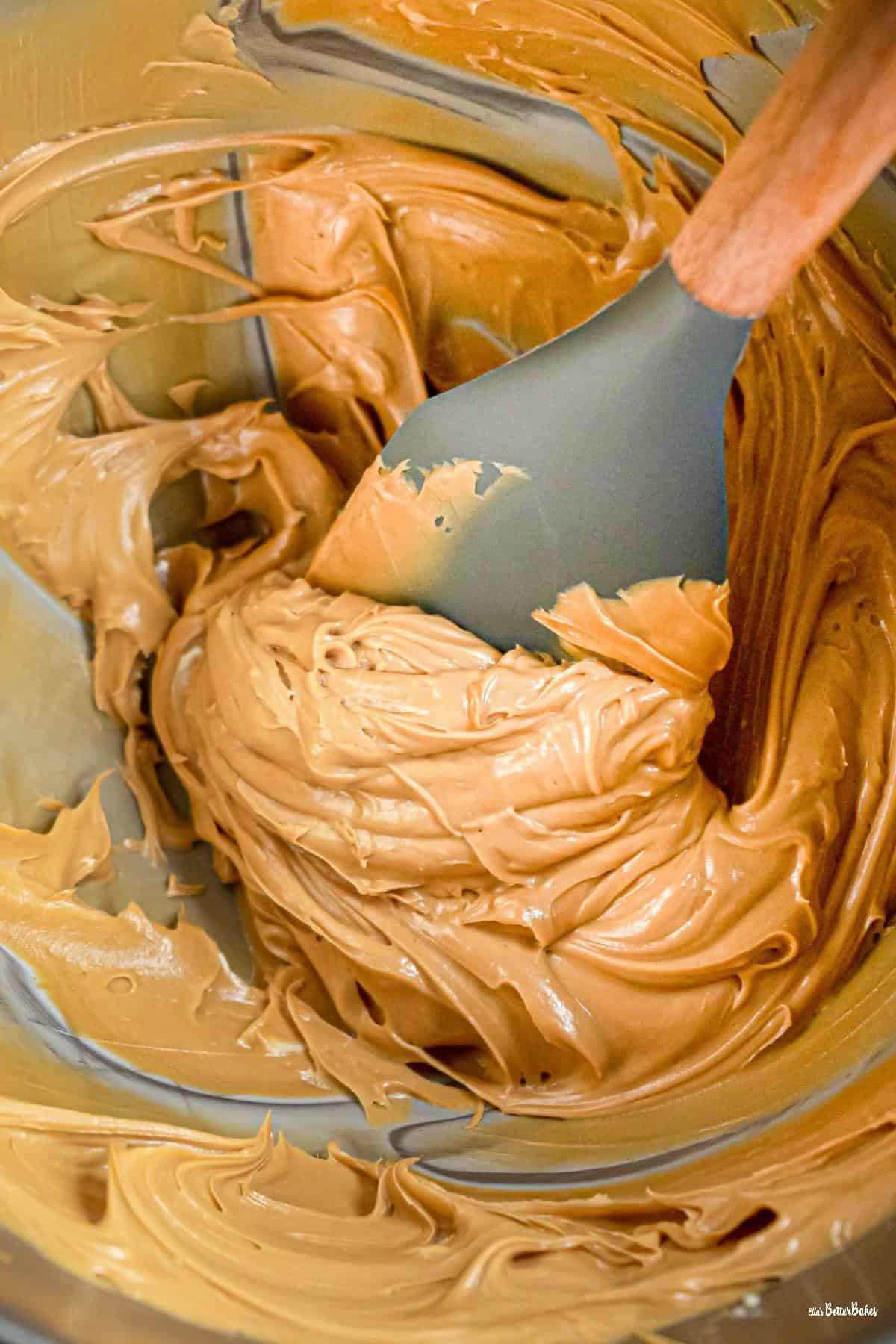
Beat your butter for a few seconds to ensure fully soft.
Add your Biscoff spread and beat until fully combined.
Gradually beat in your icing sugar.
Add a tablespoon of room temperature milk to your buttercream and beat. If still a little too stiff to pipe add another tablespoonful.
Fill your piping bag with buttercream and pipe swirls onto each cupcake. I am the first to admit that my icing technique is still a work-in-progress, I am no expert by any means, so to see how the experts do it try watching this video.
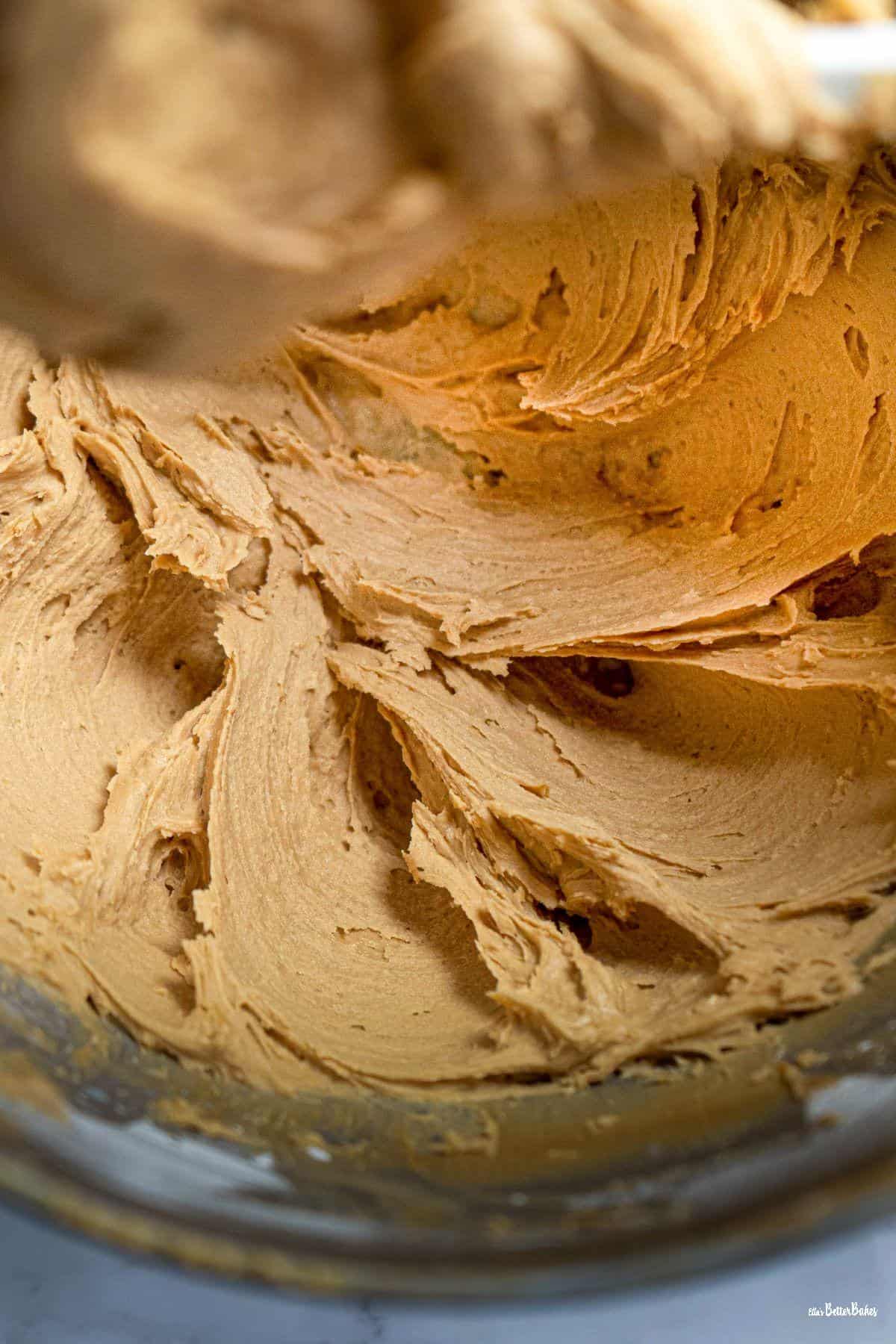

Crush your Lotus Biscoff biscuits either in a food processor or by placing them in a food bag and bashing them with a rolling pin.
Sprinkle your crushed biscuits over your icing.
Top Tips
- It is very important to beat your butter and sugar together for 2-3 minutes to ensure air is incorporated, it needs to be very paste-like and spreadable. You should notice pockets of air when you stir it.
- To ensure each muffin case contains the same amount of Biscoff Cupcake batter, place the muffin case onto your weighing scales and weigh in equal amounts. For my Biscoff cakes, this was about 50 grams per cupcake.
- To cut an even hole in the centre of each cupcake try using a Cupcake Corer.
- When making your Biscoff frosting, add your icing sugar gradually to avoid clouds billowing out from your mixing bowl.
- You can make your buttercream in advance and pop it in the fridge. Remove it from your fridge and allow it to soften up by coming up to room temperature before using.
- In order to fill your piping bag more easily, prop it up inside a large glass and fold the bag edges over the sides. Then fill the piping bag with your Biscoff icing, pull the edges up and tie it off with string where the buttercream has been filled to. This ensures that your butter icing doesn't leak out when you pipe.
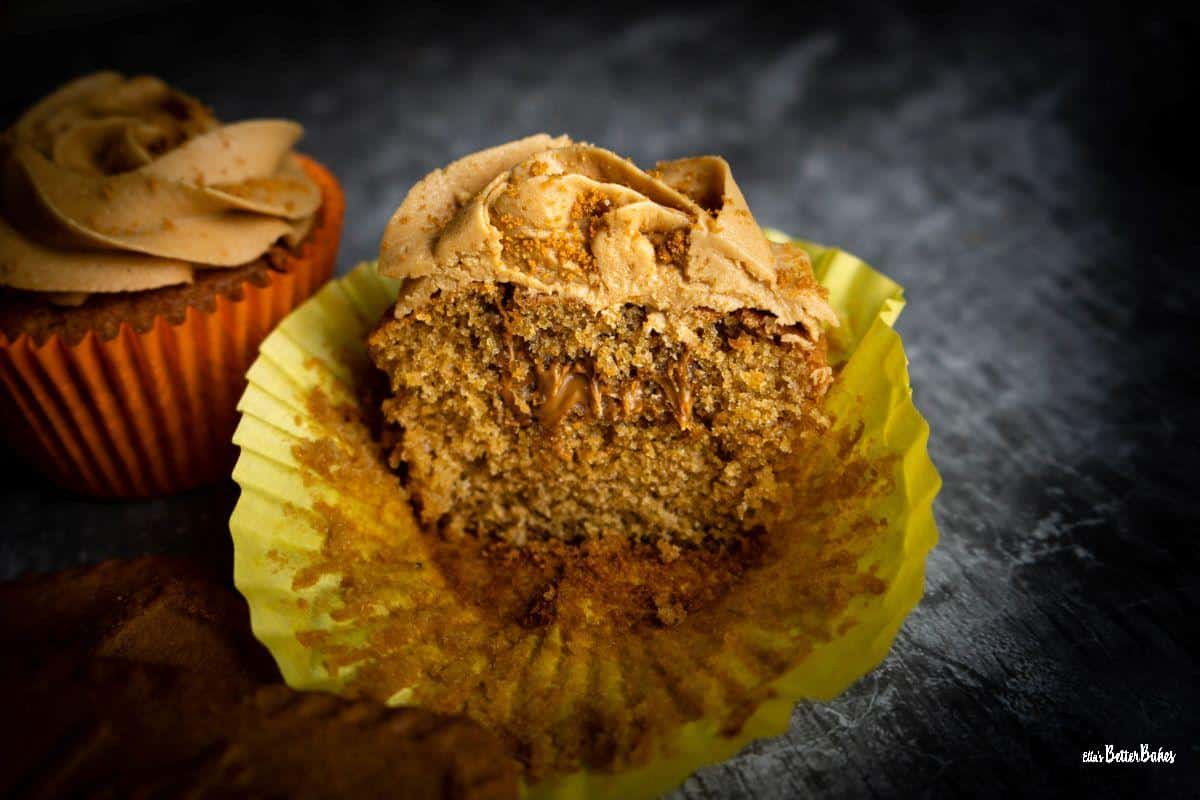
Variations
Cinnamon works very well with Biscoff, add half a teaspoon to your Biscoff cakes batter for an extra twist.
Storage
Buttercream frosted cupcakes will keep at room temperature for up to 2 days.
If kept refrigerated they will keep for 4-5 days.
You can freeze these Biscoff Cupcakes fully iced, they should be consumed within 2 months.
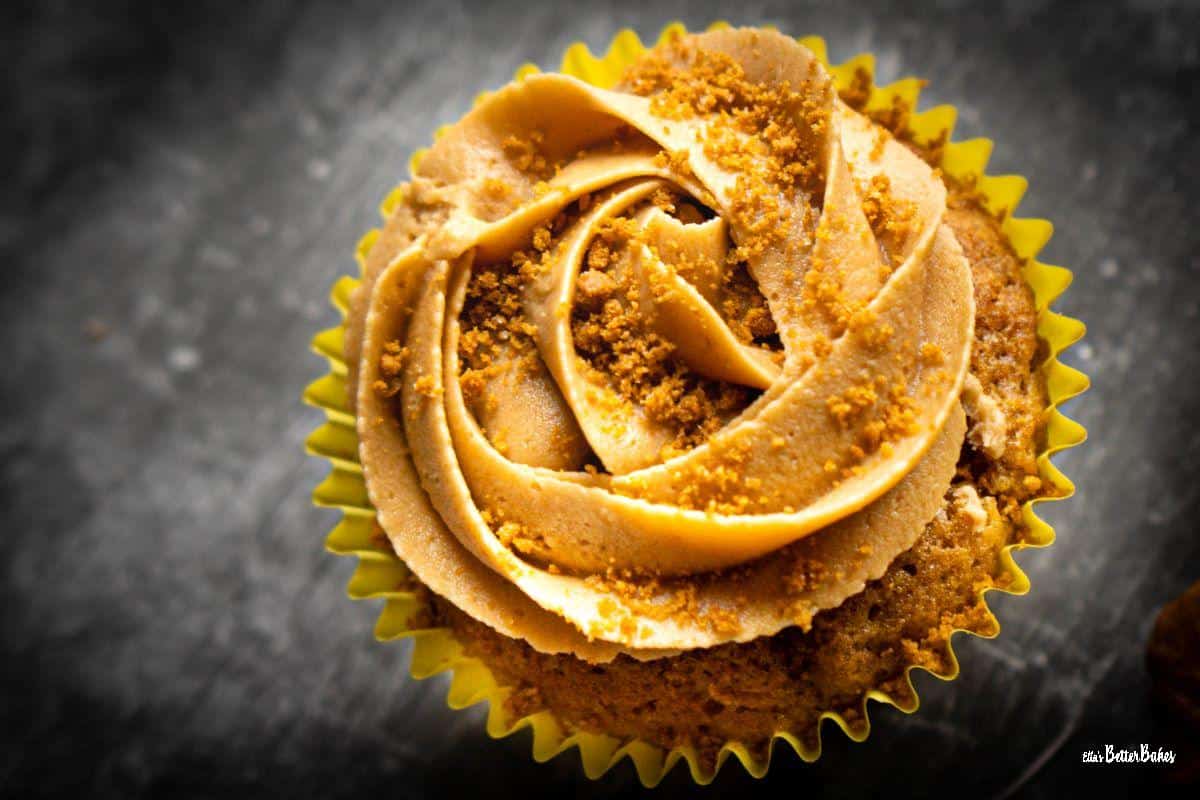
Did you try this recipe?
Please leave a ⭐⭐⭐⭐⭐ rating in the Recipe Card below.
FAQ
Not quite. Cake flour is finely milled and doesn't contain a lot of protein, whereas self-raising flour has more protein plus salt and baking powder, to ensure baked goods rise. If you need to use plain (all-purpose) flour instead of self-raising flour, simply add 2 teaspoons of baking powder for every 150 grams (1 US cup) of flour.
Moisture can evaporate from brown sugar, leaving it hard and difficult to bake with. It is still perfectly edible, however. To soften your hardened brown sugar simply place it in a microwaveable dish and cover with a damp piece of kitchen towel. Then microwave in short 10-second bursts and keep checking the consistency until it is soft again.
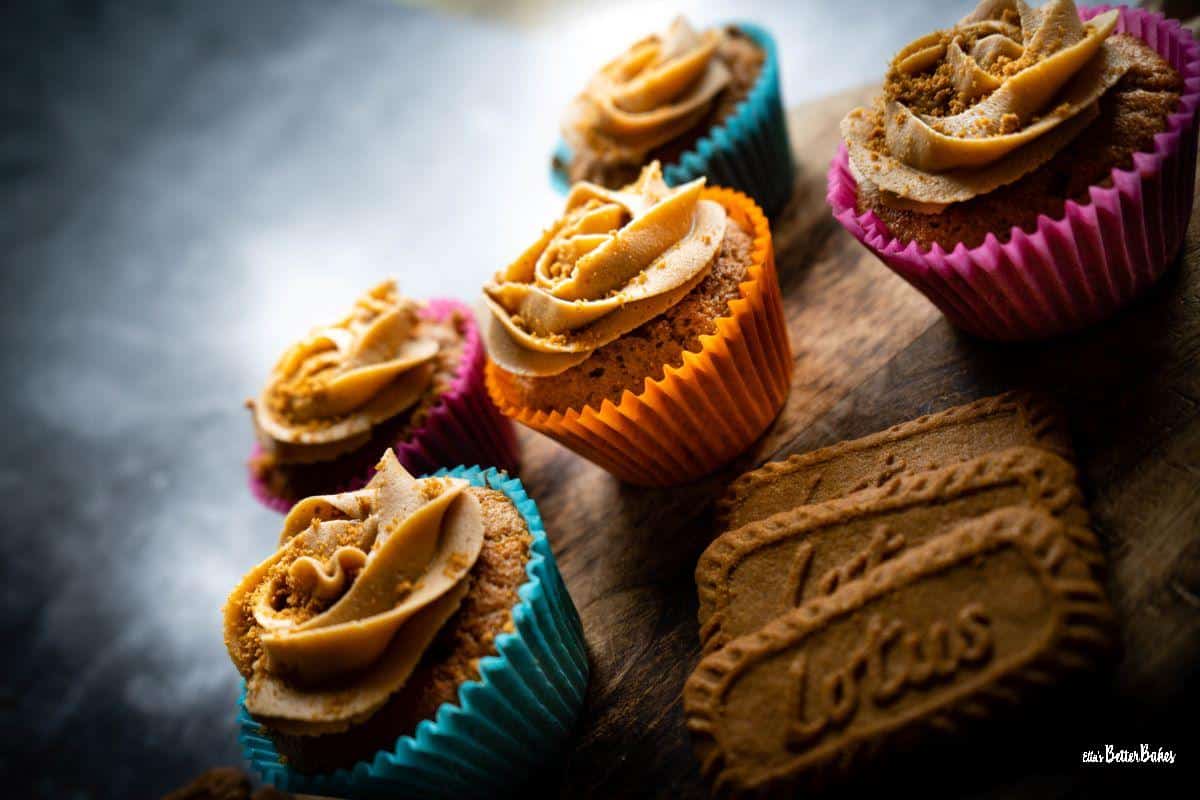
Linked Recipes
I ADORE Biscoff, hence why I have made quite a few treats with it so far!
Biscoff And Chocolate Truffles
Lotus Biscoff Ice Cream with Milk Chocolate (no churn)
📖 Recipe
Biscoff Cupcakes
Here's what you'll need...
- 12 muffin cases
- 2 Teaspoons
- Cupcake corer optional - you can use a knife instead
- Icing bag
Ingredients you'll need...
Biscoff Cupcakes
- 165 g Unsalted butter softened (US = ⅔ Cup)
- 165 g Self raising flour or plain/all-purpose flour with an extra 2 teaspoons of baking powder (US = 1 Cup + 3 tablespoons)
- 165 g Light muscovado sugar or soft brown sugar, caster/superfine sugar or golden caster/superfine sugar (US = 13 tablespoons)
- 1½ teaspoon Baking powder
- 3 Large eggs lightly beaten (US = extra large)
- 100 g Biscoff spread (US = 5 tablespoons)
- 1 tablespoon Milk at room temperature
Biscoff Buttercream Frosting (if you like a lot of buttercream please double these quantities)
- 75g g Unsalted butter softened (US = ⅓ Cup)
- 100 g Icing (confectioners) sugar sifted (US = 1 Cup)
- 100 g Biscoff spread (US - 5 tablespoons)
- 1 tablespoon Milk
- 3 Biscoff biscuits
Here's what we do...
Biscoff Cupcakes
- Heat your oven to 180°C/160°C/355°F/Gas Mark 4.
- Place your muffin cases in your muffin tin.
- Beat together your softened butter and brown sugar until soft, fluffy and paler in colour. Start on a low setting and increase to medium-high as the mixture softens. It will take 2-3 minutes to reach the correct consistency. (See FAQs above if your brown sugar is hard).
- Sift together your flour and baking powder.
- Add a third of your beaten eggs and a heaped tablespoon of your sifted flour mixture to your butter mixture and beat on a low setting. Stop as soon as soon as you can no longer see any egg.
- Repeat twice more until all of your egg mixture as been mixed in.
- Add the rest of your flour mixture and beat until just incorporated. Scrape down your bowl using your spatula to ensure all of the mixture from the sides and bottom is mixed in.
- Add your milk and then beat again for about 10 seconds
- Using one teaspoon to scoop up some batter and one to scrape it off into the muffin case, add equal amounts of batter to each muffin case (see Notes below).
- Place into your oven and bake for 18-20 minutes. When ready your cupcakes will be golden on top and spring back up when you gently press them.
- Remove to your cooling rack and leave to cool completely.
- Once cool use your cake corer or a knife to cut out little holes in the top of each cake, about 2 cm deep. Put the removed cake aside.
- Fill these holes with your Biscoff spread. If your Biscoff is a little stiff pop it into a microwavable bowl and heat for 10 seconds.
- Replace the removed cake pieces to hide the Biscoff inside.
Biscoff Buttercream Frosting
- Place your softened butter into your mixing bowl and beat for about 10 seconds to fully soften.
- Add your Biscoff spread and beat on a low setting for another 10 seconds. Then scrape your bowl down with your spatula to ensure all of the butter at the base is picked up. Beat again for 10-15 seconds until totally mixed together and no lumps of butter remain.
- Keeping your mixer on a low setting gradually add your sifted icing (confectioner's) sugar. See Notes below for tips.
- Beat until all of your icing sugar has been mixed in. Add your milk to ensure your buttercream is soft enough to pipe.
- Cut the tip off your piping bag and place your star piping nozzle into it, just the end of the piping tip should stick out of the end of the piping bag and the bag should fit snuggly around it so that icing cannot escape down the sides of the tip.
- Fill your piping bag with buttercream. See Notes below for tips on how to do this. Tie the top with kitchen string to ensure that buttercream does not leak out when piping.
- Pipe a swirl of buttercream onto each cake. See video in main blog post for instructions showing how to do this.
- Crush your Lotus Biscoff biscuits either in a food processor or by placing them in a food bag and bashing them with a rolling pin.
- Sprinkle your crushed biscuits over your icing.
Supporting Notes
- It is very important to beat your butter and sugar together for a 2-3 minutes to ensure air is incorporated, it needs to be very paste like and spreadable. You should notice pockets of air when you stir it.
- To ensure each muffin case contains the same amount of Biscoff Cupcake batter, place the muffin case onto your weighing scales and weigh in equal amounts. For my cupcakes this was about 50 grams per cupcake.
- To cut an even hole in the centre of each cupcake try using a Cupcake Corer.
- When making your Biscoff frosting, add your icing sugar gradually to avoid clouds billowing out from your mixing bowl.
- You can make your buttercream in advance and pop it in the fridge. Remove it from your fridge and allow it soften up by coming up to room temperature before using.
- In order to fill your piping bag more easily, prop it up inside a large glass and fold the bag edges over the sides. Then fill the piping bag with your Biscoff icing, pull the edges up and tie the it off with string where the buttercream has been filled to. This ensures that your butter icing doesn't leak out when you pipe.

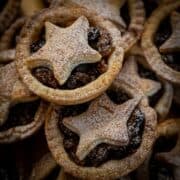
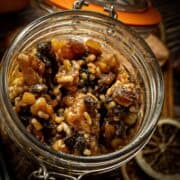
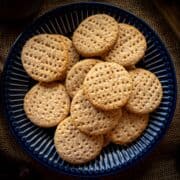
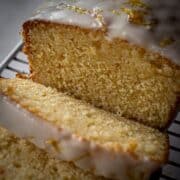
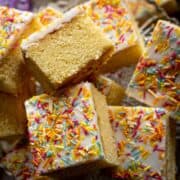
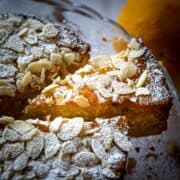
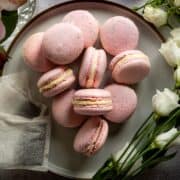
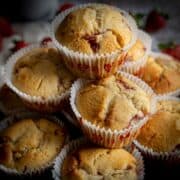


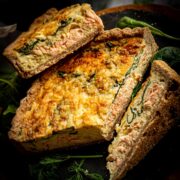
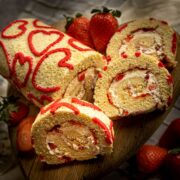
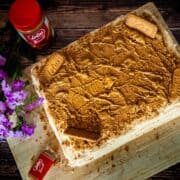
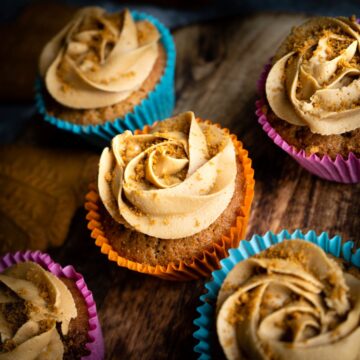
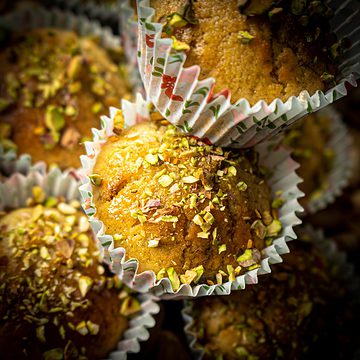
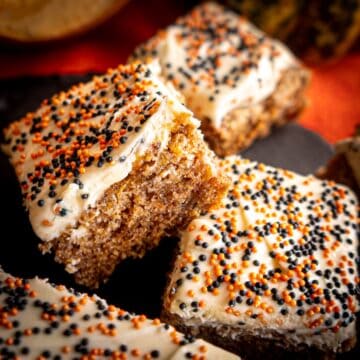
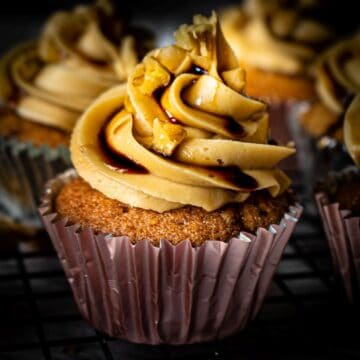
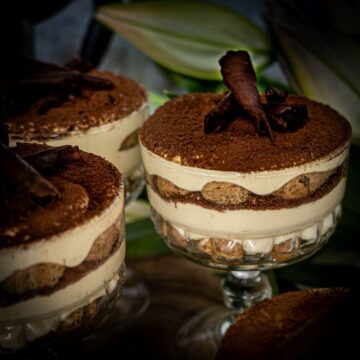
Comments
No Comments